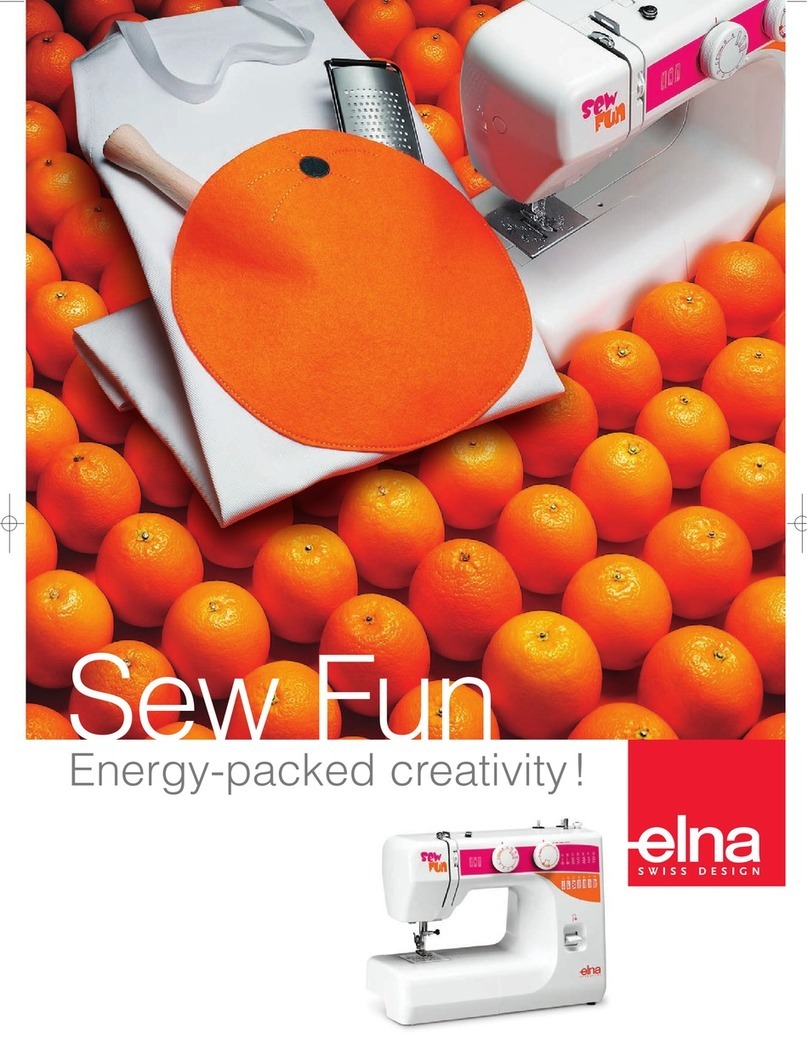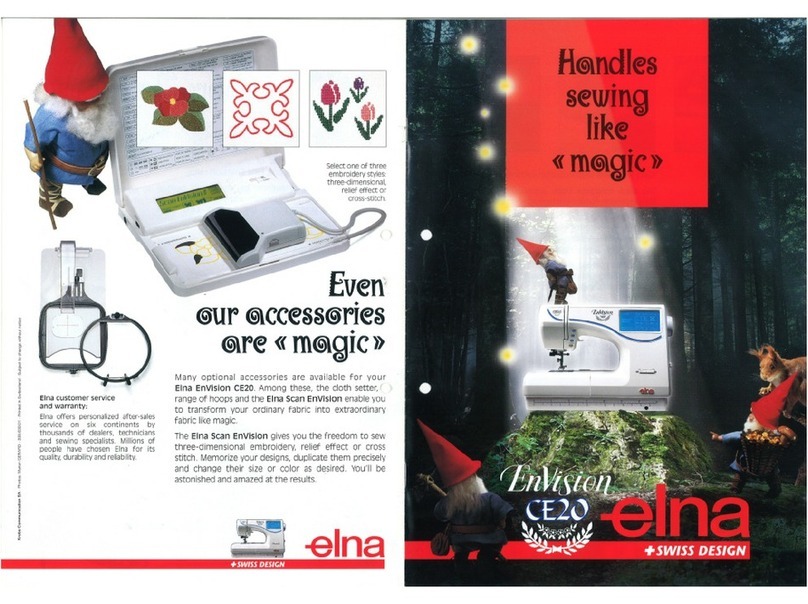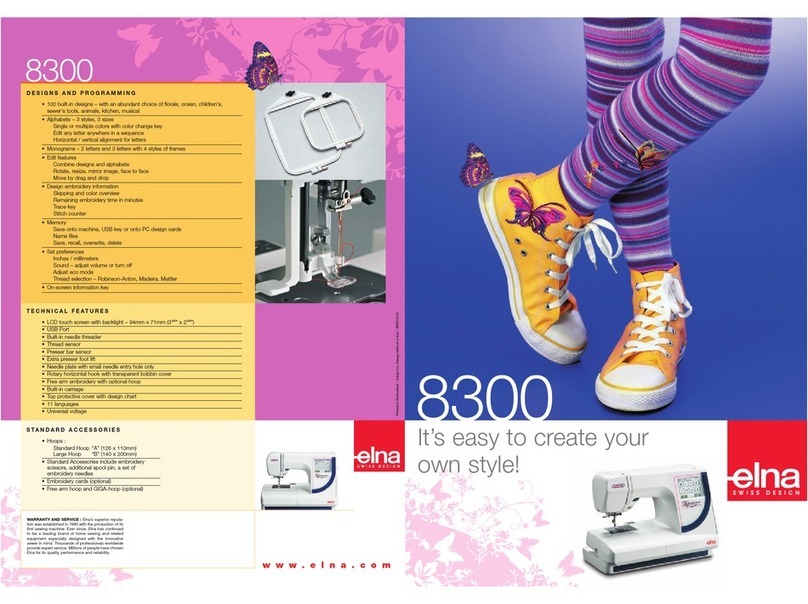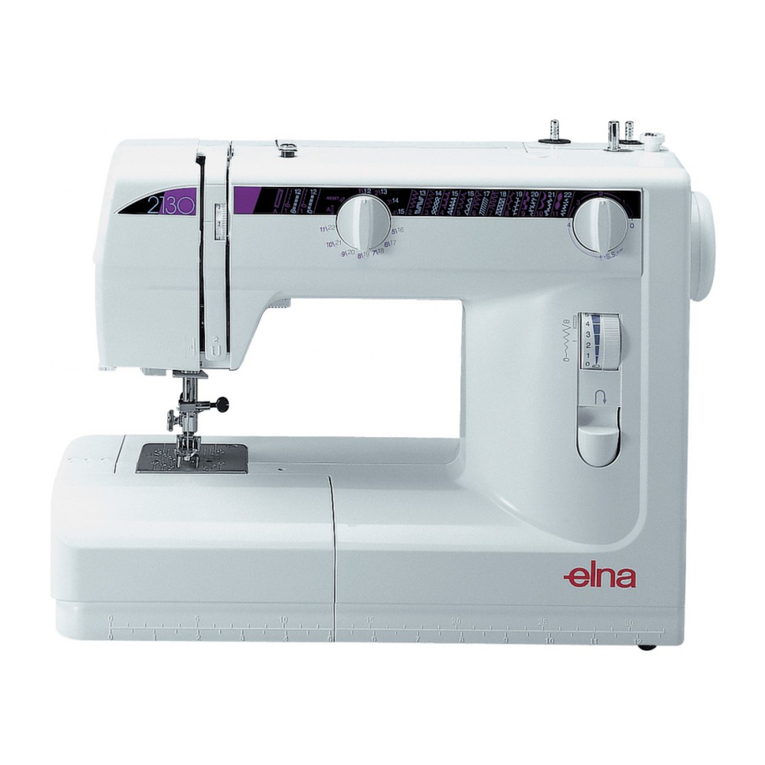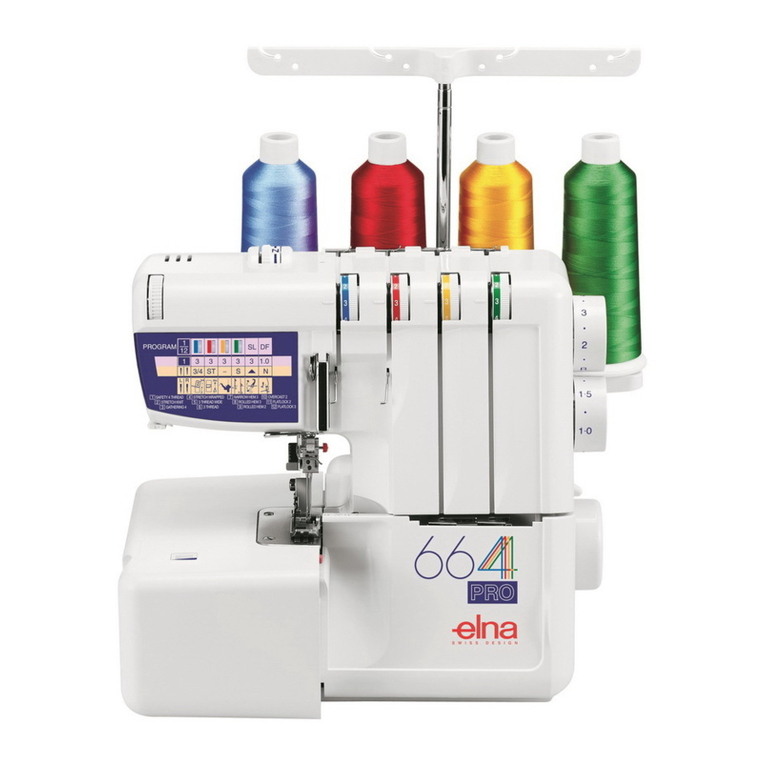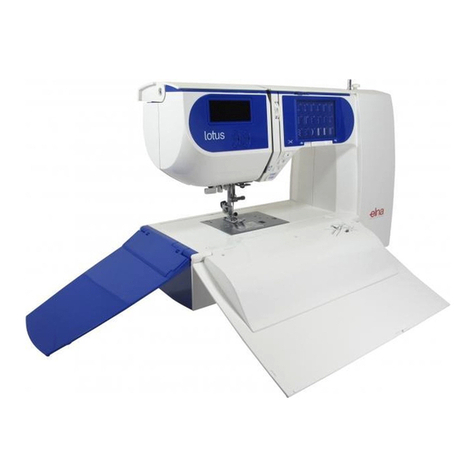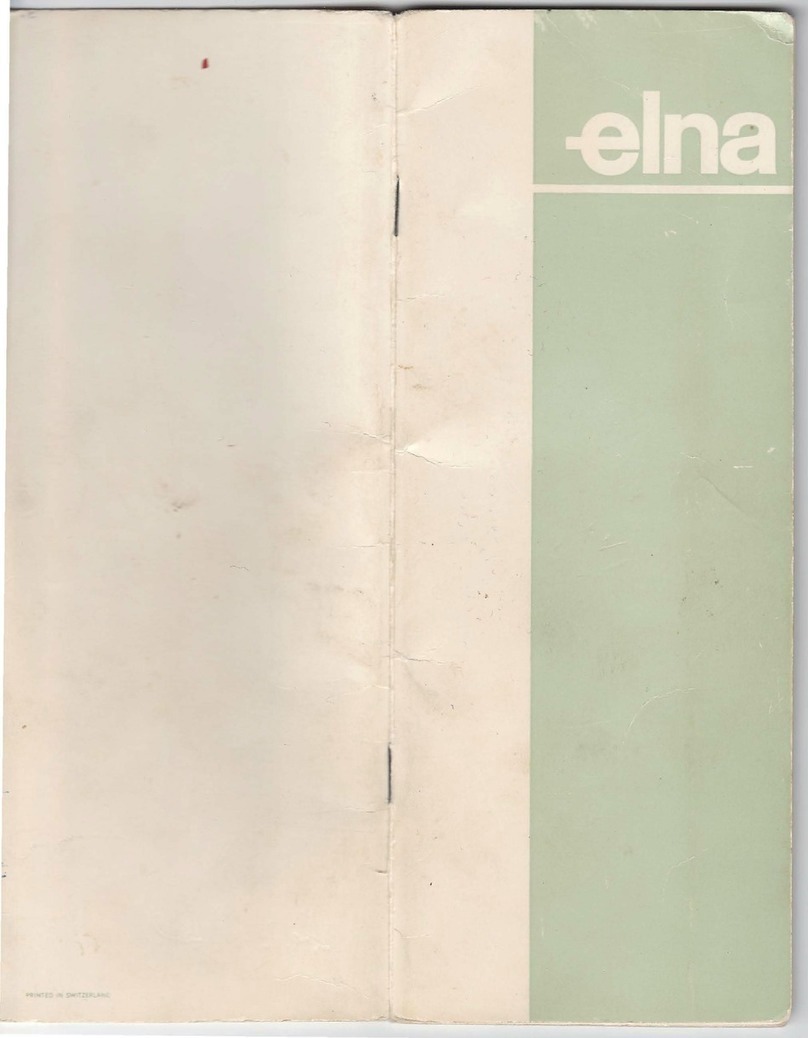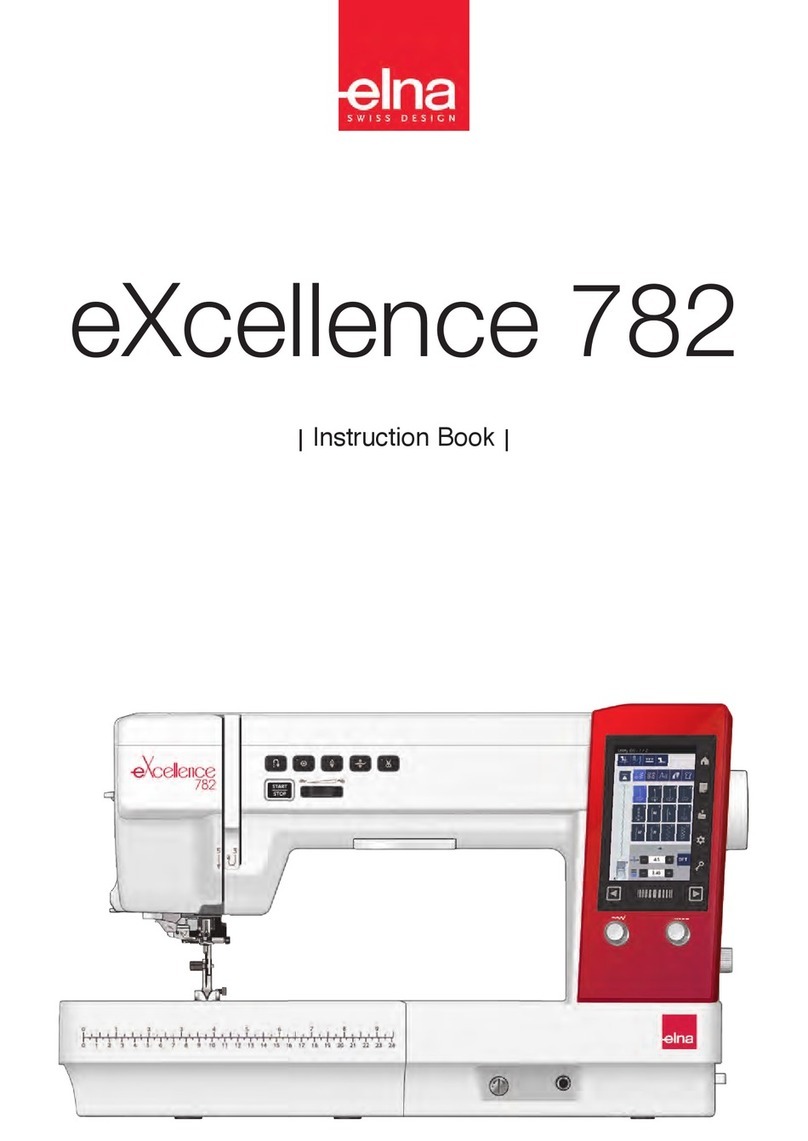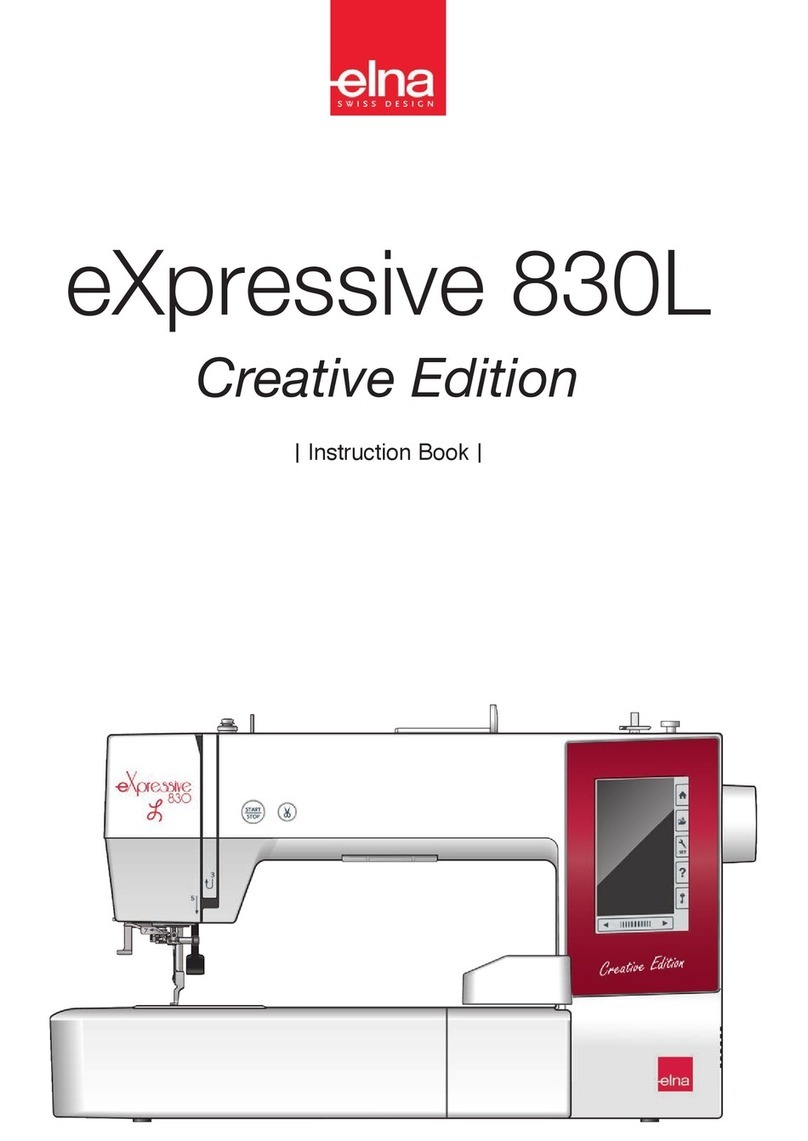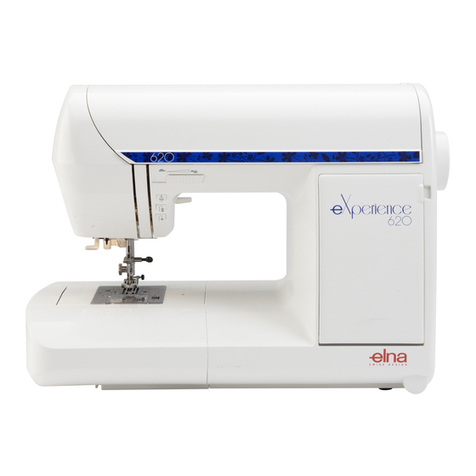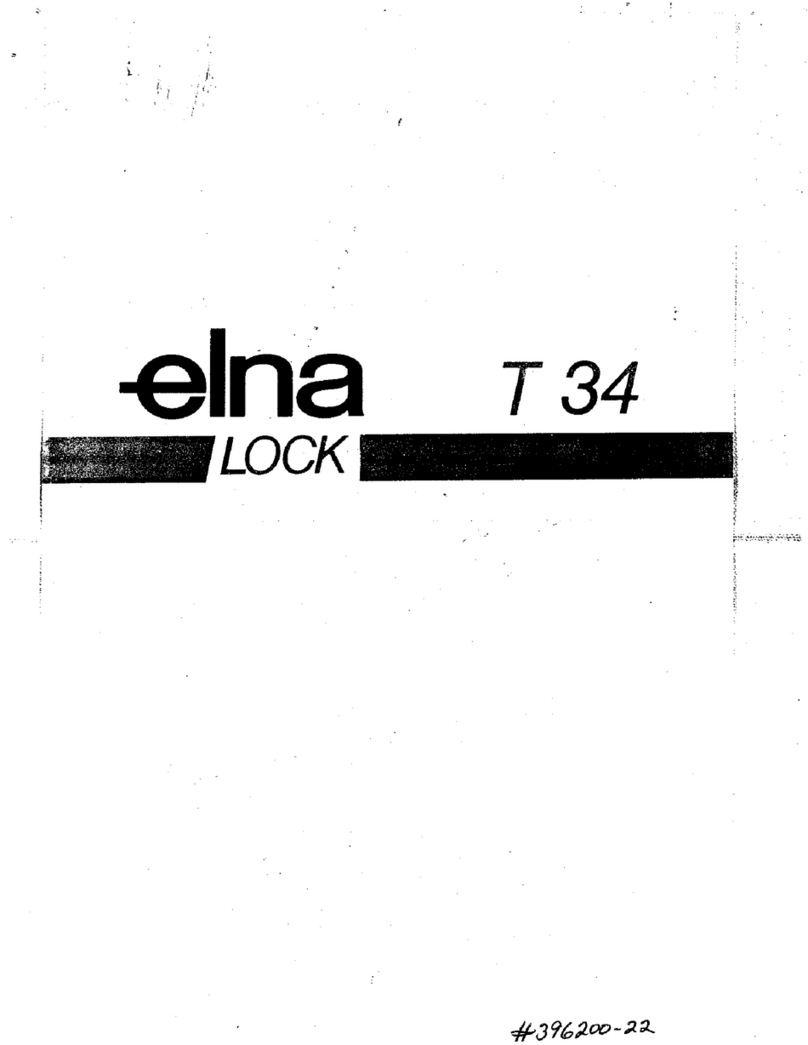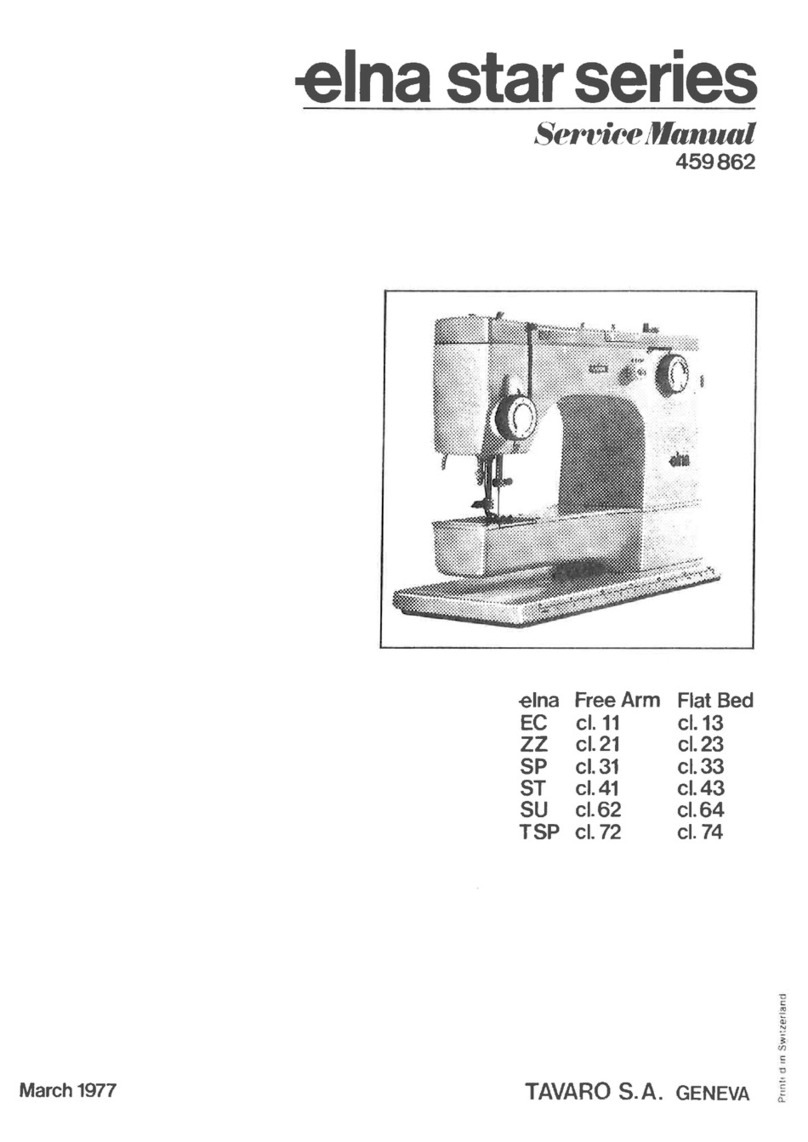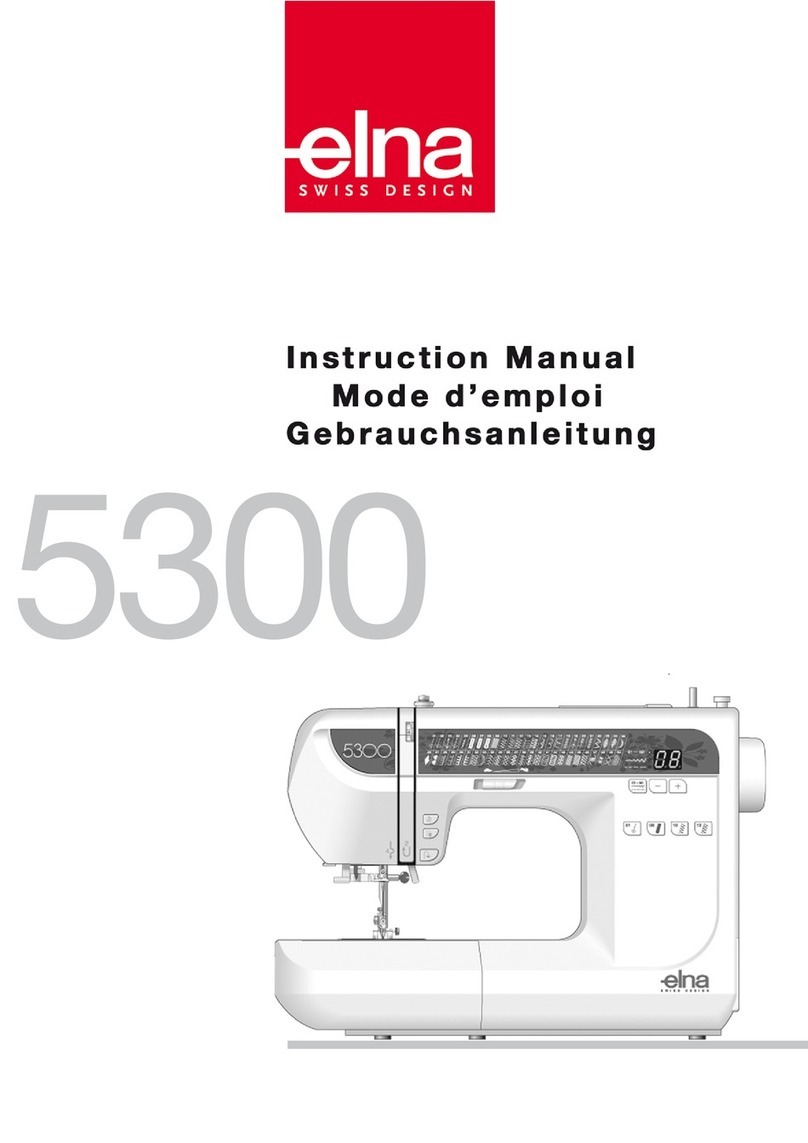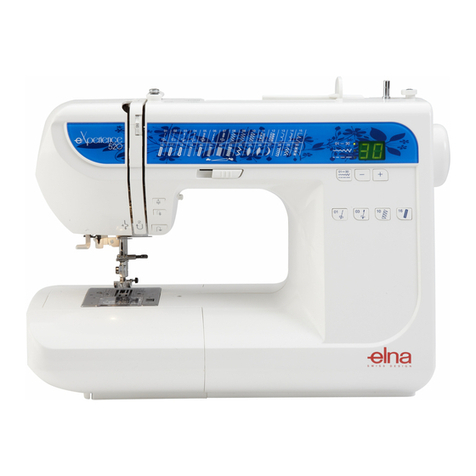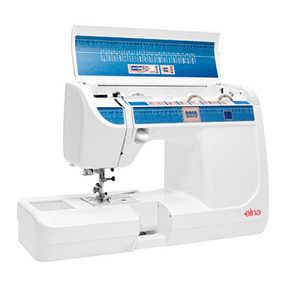2
TABLE OF CONTENTS
ESSENTIAL PARTS
Names of Parts............................................................3-4
Standard Accessories .................................................... 4
Accessory Storages ....................................................... 5
Protection Flaps ............................................................. 6
• Opening and closing protection aps........................... 6
• Detaching the protection aps ..................................... 6
• Attaching the protection aps ...................................... 6
• Free-arm sewing .......................................................... 6
GETTING READY TO SEW
Connecting the Power Supply..................................... 7-8
Using the foot control ..................................................... 7
Before Using Your Sewing Machine............................... 7
Operating Instructions: ................................................... 7
Using the start/stop button ............................................. 8
Controlling Sewing Speed.............................................. 8
Speed control slider ..................................................... 8
Foot control .................................................................. 8
Machine Operating Buttons....................................... 9-10
Start/Stop button .......................................................... 9
Reverse button ............................................................. 9
Auto-lock button ........................................................... 9
Needle up/down button .............................................. 10
Thread cutter button................................................... 10
Stitch width adjusting button ...................................... 10
Stitch length adjusting button ..................................... 10
LCD Display...................................................................11
Touch Panel...................................................................11
Arrow keys...................................................................11
Numeral keys...............................................................11
Direct pattern selection keys .......................................11
Thread cut memory key...............................................11
Elongation key.............................................................11
Set key.........................................................................11
Lockout key .................................................................11
Selecting the Patterns .................................................. 12
Direct pattern selection .............................................. 12
Presser Foot Lifter........................................................ 13
Changing the Presser Foot .......................................... 13
Removing and Attaching the Foot Holder .................... 13
Adjusting the Needle Thread Tension ......................14-15
Straight stitch balanced tension ................................. 14
Zigzag stitch balanced tension................................... 15
Dropping or Raising the Feed Dog............................... 16
Changing the Needle.................................................... 17
Fabric, Thread and Needle Chart................................. 17
Bobbin Winding ....................................................... 18-20
Removing the bobbin ................................................. 18
Setting the spool ........................................................ 18
Winding the bobbin .................................................... 19
Inserting the bobbin.................................................... 20
Threading the Machine................................................. 21
Needle Threader .......................................................... 22
Drawing up the Bobbin Thread .................................... 23
Setting Mode ........................................................... 24-26
Buzzer sound setting.................................................. 24
Needle stop position setting....................................... 24
Key position adjustment setting ................................. 25
Resetting all to default................................................ 26
BASIC SEWING
Straight Stitch Sewing .................................................. 27
Starting to sew............................................................ 27
Securing seams.......................................................... 27
Cutting threads........................................................... 27
Auto Thread Cutting ..................................................... 28
Changing Sewing Direction.......................................... 28
Sewing from the Edge of Thick Fabric ......................... 28
Using Seam Guides ..................................................... 29
Turning Square Corners ............................................... 29
Altering the Needle Drop Position ................................ 30
Altering the Stitch Length ............................................. 30
Variety of Straight Stitches ...................................... 31-32
Lock-a-matic Stitch..................................................... 31
Locking Stitch............................................................. 31
Triple Stretch Stitch .................................................... 31
Stretch Stitch .............................................................. 32
Sculpture Stitches ...................................................... 32
Zigzag Stitch................................................................. 33
Altering the stitch width .............................................. 33
Altering the stitch length ............................................ 33
Variety of Overcasting Stitches .................................... 34
Multiple Zigzag Stitch ................................................. 34
Knit Stitch ................................................................... 34
Super Overlock Stitch................................................. 34
Attaching Elastic........................................................... 35
Buttonholes .............................................................36-43
Square Buttonhole................................................. 37-39
Altering the buttonhole width.................................... 39
Altering the buttonhole density................................. 39
Round-end and Fine Fabric Buttonhole ..................... 40
Keyhole Buttonhole .................................................... 40
Stretch Buttonhole and Antique Buttonhole............... 40
Corded Buttonhole ..................................................... 41
Welted Buttonhole .................................................42-43
Darning Stitch............................................................... 44
Tacking ......................................................................... 45
Eyelet............................................................................ 46
Zipper Sewing ......................................................... 47-49
Blind Hemming............................................................. 50
Button Sewing .............................................................. 51
Rolled Hem................................................................... 52
Gathering...................................................................... 53
DECORATIVE STITCHES
Patchwork..................................................................... 54
Angle scale on the needle plate ................................. 54
Shell tuck...................................................................... 54
Lingerie Stitch............................................................... 55
Applique ....................................................................... 55
Pintucks........................................................................ 56
Fringing......................................................................... 56
Drawn Work.................................................................. 57
Cross Stitch .................................................................. 57
Corded Trim.................................................................. 58
Single Cord For Gathering Heavy Fabric ..................... 58
Fagoting........................................................................ 58
French Knots ................................................................ 59
Scallop Stitch................................................................ 59
Smocking...................................................................... 59
Stippling Stitch.............................................................. 60
Clasp Stitch .................................................................. 60
Satin Stitches ............................................................... 61
Elongation ratio .......................................................... 61
Decorative Stitches ...................................................... 61
CARE OF YOUR MACHINE
Cleaning the Hook Race and Feed Dog ...................... 62
Installing the Bobbin Holder ......................................... 62
Correcting Distorted Stretch Stitch Patterns ................ 63
Problems and Warning Signals .................................... 64
Troubleshooting............................................................ 65
Stitch Chart................................................................... 66
EC DECLARATION OF CONFORMITY....................... 67
